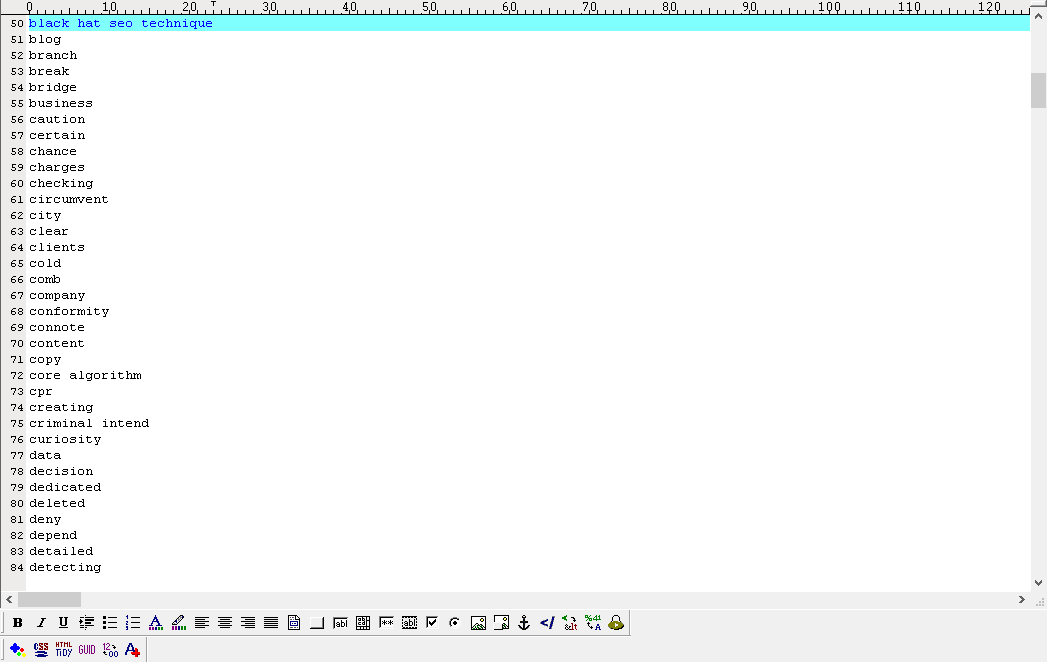Top Black Hat SEO Trends in 2026
3 Black Hat SEO Methods with Proven Results
by Dr. William Sen
The word Black Hat is presumed by most language users to connote ominous intent and this is because many popular dictionaries define black hat as “an action with malicious or criminal intent”. While Black Hat practices in the real world often break laws, Black Hat SEO practices mostly go against Google’s laws, which cannot be exactly defined as “illegal”. Black Hat SEO can be bad for your website if Google catches you. However, it will provide stunning results if you know how to disguise your Black Hat SEO methods.
The use of Black Hat SEO techniques helps users circumvent Google’s guidelines to their own advantage. Using these Black Hat SEO methods leaves such pages at the detriment of Google’s sanctions called “manual action”. In many cases, pages that have used Black Hat SEO techniques are usually deleted from Google’s result pages. While many SEO experts will advise you to steer clear of Black Hat SEO, I believe that the decision to choose to use these kinds of methods depend on the method. Essentially, this article will allow you pry into the world of Black Hat SEO for knowledge purposes.
On my own, I have experimented with several Black Hat SEO tricks on some sites which were of no importance to me, or to my clients. This was in a bid to satisfy my curiosity, and to unravel the mysteries surrounding the subject of Black Hat SEO.
My findings are detailed in this article and as you will see, and they work quite effectively as of 2026. I’d advise you to test them on a website that wouldn’t make you feel uncomfortable should Google decides to hit you— that’s when Google comes back to you and basically says “I know what you did”. Working with Black Hat SEO techniques is best compared to gambling because Google is bound to find it out someday. So, take caution.
Let’s get started already.
Black Hat SEO #1: Repurposing Stock Images
This practice is commonly known as mirror imaging. I have encountered situations where the fit stock image for my page has been used many times by other websites. Google’s algorithm is not a friend of used images, because it’s considered duplicate content. It’s not as nearly as bad as duplicate text (text that has been used some place else)—but using a duplicate image doesn’t support SEO much. But Google rates unique images above everything.
There are times where there you just can’t find a better image to use than that one that you found on one of the stock sites. I talked extensively about Google’s image algorithm on my blog post, “How to use SEO Optimized Images”. On that post, I talked about the steps you can take in “Selecting a Unique Image for Your Site”.
An easy black hat technique is to just mirror the image. If you mirror a common stock image and use it on your page, Google’s algorithm will consider such image as unique.
As much as mirror imaging sounds like an interesting plan, I would rather use the method highlighted in “How to use SEO Optimized Images”. The same Black Hat technique is used, but this time, I was able to figure out how to turn it into a White Hat technique. It basically allows you reuse commonly used stock images, but this method may require a little more effort from you—little more effort with reassuring results.
What’s the probability of falling to Google’s long hammer?
The best way to ascertain this probability is by checking to see the rate at which this technique is in use. Although this technique is not common amongst SEO professionals, I have seen from my research that it is gaining ground in Russia, Ukraine and in several parts of Asia. These indications therefore point that it cold soon become a common trend among SEOs, and once this bridge is crossed, Google’s updates will take care of it. From my estimation, this should happen in about 5 years, so if you use this method to get your pages ranked now, I’d say “carpe diem”.
Black Hat SEO #2: Location Matters
As all SEOs know, Google also ranks content based on location. Majority believes Google search results appear based on the proximity to the searcher’s location. However, this is not known to many: in what is registered in the world of SEO as ‘Google’s Patriotic Algorithm’, Google ranks content for pages within the United States more than it does for pages belonging to the same company, but operating out of another location. Suppose you operate a marketing company in New York City, with a branch operating out of Greece, the content on your New York City page will be ranked higher. You have to take my word for it as Google will deny this out rightly because there are no proofs. But, I have seen it play out in many situations. If you take the time to observe this too, you will find a trend of beautiful websites with strict conformity to Google’s SEO guidelines, but with low ranks because of their locations. You’ll also find websites that are not as superb as these ones gaining higher ranks just because they are located in the U.S.
The use of location keywords and tags will prove futile because Google detects website’s location from the host network and the IP will definitely give it off. I have tried to think of a way around this but maybe because I am not in this situation; I have not pursued it enough. For now, I’d advise you to start your business in the United States and you should make sure to use a United States based host. You are certain to enjoy all of Google’s location perks, but if you do not live in the United States; there are some Black Hat techniques you could use for that, too, so I believe you will find our way around it.
Black Hat SEO #3: Extracting Page Texts and Inverting
I once researched about the data structures of search engines and the patterns exhibited by their algorithms during my PhD studies in Germany. It was through this research I discovered this interesting feature. I realized that this was a potential Black Hat SEO technique to manipulate search engine algorithms. I tested it with search engines and I got results.
Here is a simple illustration of how it works—You will look for websites with higher ranked pages. On the Search Engine Result Pages (SERP), these are the pages you will comb for specific keywords. The simple trick then is to copy the entire text on the page and invert index it. Inverting a page’s index implies that you will use line breaks to extract all the words from the summation of text on the page, and but them in alphabetical order. After these, you will need to eliminate all the stop words and irrelevant keywords as you’d see in the example on the next page. Stop words include – ‘the’, ‘a’, ‘and’, ‘when’, ‘at’, ‘or’, ‘also’, ‘from’, ‘but’ etc. Irrelevant keywords include – ‘because’, ‘when’, ‘certain’, ‘under’, ‘will’, ‘while’, ‘have’ etc.
The image on the next page is from the fun script I developed. It depicts how an inverted index of this article would look:

The image shows results of this article’s “modified inverted index”.
You may be wondering what it is you would do with these extracted keywords. But now comes the fun part. Using these keywords is the most difficult part of this Black Hat SEO technique, and you will need to find a very good and especially dedicated content writer. This content writer will need to develop a unique content for your new page with all of these extracted keywords.
Most content writers only play with around 3-6 keywords when creating text for new pages. But this time, the writer has to implement hundreds of keywords into the text. The charges of the content writer may be exorbitant because the process will take a large chunk of their time, and even when you match their charge, you will need perform CPR on them. But get it done, and the results of the new created page will be outstanding.
What’s the probability of falling to Google’s long hammer?
This technique is one with minimal risks as it is rare, and focuses on the core intricacies of Google’s algorithm. There is a slim to no chance of detecting this technique by Google because the new text created will be extremely different from the original text. Only you will most likely know what you have done to get your unique and highly ranked page.


 by
by 




